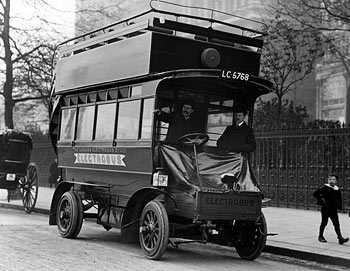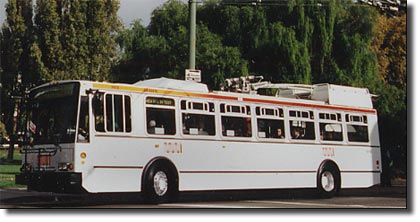Electric Vehicles- A Century Late...
09/13/07 20:13

The year is 1907. The city is London where a fleet of 20 electric powered buses glides silently between the horse-drawn past and the noisy, dirty and unreliable future. Shortly thereafter, they disappeared despite being popular with passengers, more reliable and cost effective than motor buses. Why? Read on...
A full century later, remarkably similar buses using similar "battery swap" technology from EVAmerica and others are just beginning to be used in American cities such as Chattanooga and Santa Barbara.
As this week's Economist points out, buses could have been predominantly be electric if the Electrobus Company had not been managed with WorldCom-like ethics complete with a failed IPO, payments to fake patent holders and insider dealing.
Why now? Electric buses require less energy because it is generated in more efficient plants than gasoline or diesel motors. Electric buses have always had lower maintenance costs because they don't have conventional transmissions and braking is electric. But new battery technology is now giving electric buses greater range than the 40 miles achieved by Electrobus in 1907
Trolley bus fleets powered by overhead wires are also growing once again with San Francisco's MUNI operating a fleet of 333 mostly new Czech-built buses city wide, up from 270 just a few years ago. This is part of MUNI's goal to achieve zero emissions by 2020.
As this week's Economist points out, buses could have been predominantly be electric if the Electrobus Company had not been managed with WorldCom-like ethics complete with a failed IPO, payments to fake patent holders and insider dealing.
Why now? Electric buses require less energy because it is generated in more efficient plants than gasoline or diesel motors. Electric buses have always had lower maintenance costs because they don't have conventional transmissions and braking is electric. But new battery technology is now giving electric buses greater range than the 40 miles achieved by Electrobus in 1907
Trolley bus fleets powered by overhead wires are also growing once again with San Francisco's MUNI operating a fleet of 333 mostly new Czech-built buses city wide, up from 270 just a few years ago. This is part of MUNI's goal to achieve zero emissions by 2020.

blog comments powered by Disqus


